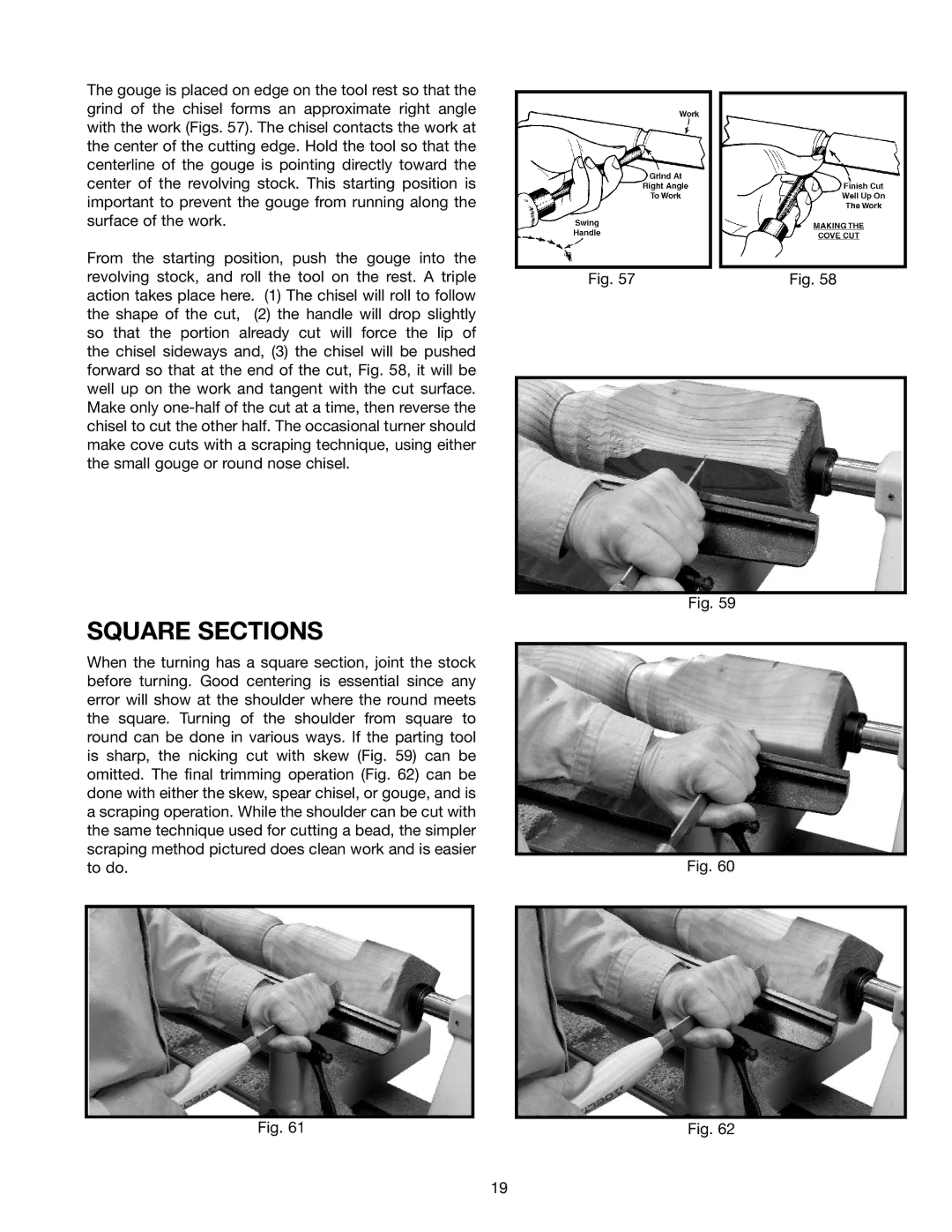
The gouge is placed on edge on the tool rest so that the |
|
|
|
|
|
| |
grind of the chisel forms an approximate right angle |
|
|
|
with the work (Figs. 57). The chisel contacts the work at |
|
|
|
the center of the cutting edge. Hold the tool so that the |
|
|
|
centerline of the gouge is pointing directly toward the |
|
|
|
center of the revolving stock. This starting position is |
|
|
|
important to prevent the gouge from running along the |
|
|
|
surface of the work. |
|
|
|
From the starting position, push the gouge into the |
|
|
|
revolving stock, and roll the tool on the rest. A triple | Fig. 57 |
| Fig. 58 |
action takes place here. (1) The chisel will roll to follow |
|
|
|
the shape of the cut, (2) the handle will drop slightly |
|
|
|
so that the portion already cut will force the lip of |
|
|
|
the chisel sideways and, (3) the chisel will be pushed |
|
|
|
forward so that at the end of the cut, Fig. 58, it will be |
|
|
|
well up on the work and tangent with the cut surface. |
|
|
|
Make only |
|
|
|
chisel to cut the other half. The occasional turner should |
|
|
|
make cove cuts with a scraping technique, using either |
|
|
|
the small gouge or round nose chisel. |
|
|
|
|
|
|
|
Fig. 59
SQUARE SECTIONS
When the turning has a square section, joint the stock |
|
before turning. Good centering is essential since any |
|
error will show at the shoulder where the round meets |
|
the square. Turning of the shoulder from square to |
|
round can be done in various ways. If the parting tool |
|
is sharp, the nicking cut with skew (Fig. 59) can be |
|
omitted. The final trimming operation (Fig. 62) can be |
|
done with either the skew, spear chisel, or gouge, and is |
|
a scraping operation. While the shoulder can be cut with |
|
the same technique used for cutting a bead, the simpler |
|
scraping method pictured does clean work and is easier | Fig. 60 |
to do. |
Fig. 61 | Fig. 62 |
19
